Da settembre a dicembre
10 dicembre 2024
- ENGLISH VERSION BELOW -
Ci eravamo lasciati che eravamo tornati dalla Laguna di Venezia, intenti a cominciare i preparativi per la crociera in Croazia per il mese di settembre, ma le previsioni del tempo ci hanno fatto posticipare la partenza fino al punto in cui ci siamo resi conto che la nostra crociera nel Nord della Croazia sarebbe saltata, visti i lavori che ci attendevano da ottobre in poi.
C'è stata sicuramente una finestra meteo per la traversata (che è minimo di 15 ore) ma non volevamo passare la maggior parte dei primi giorni a cercare rifugio dal maltempo, senza sapere come poi si sarebbe evoluto il meteo, che è appunto stato molto instabile e piovoso con venti forti per tutto settembre, come ci è stato poi confermato dalle esperienze poco piacevoli di chi invece aveva deciso di andarci.
Siamo quindi stati felice della nostra scelta di rimanere nel nostro porto sicuro a Marina di Ravenna, e cominciare a dedicarci ai piccoli e grandi progetti che avevamo comunque in programma per quest'autunno e inverno, per preparare la barca alla prima vera e propria stagione in navigazione.
Abbiamo infatti acquistato Aurora in ottime condizioni, pronta a veleggiare dal primo giorno e pronta alla prima crociera dopo qualche settimana, ma ora è arrivato il momento di adattarla alla vita a bordo anche d'inverno e a prepararla a settimane in rada senza bisogno di andare in porto a partire dalla prossima primavera, quando lasceremo definitivamente il nostro posto barca a Marina di Ravenna.
Dopo diversi mesi a bordo abbiamo più chiare le nostre esigenze abitative e abbiamo deciso di rimuovere le porte delle cabine, accorciare il tavolo per poterci muovere più agilmente e installare delle doghe sotto il materasso per prevenire problemi di condensa nei mesi freddi.
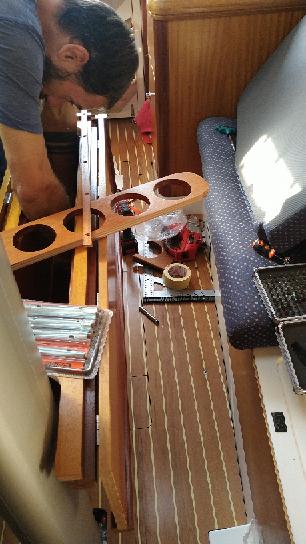
Matteo mentre rimonta il tavolo dopo averlo segato e adattato alla nuova posizione.
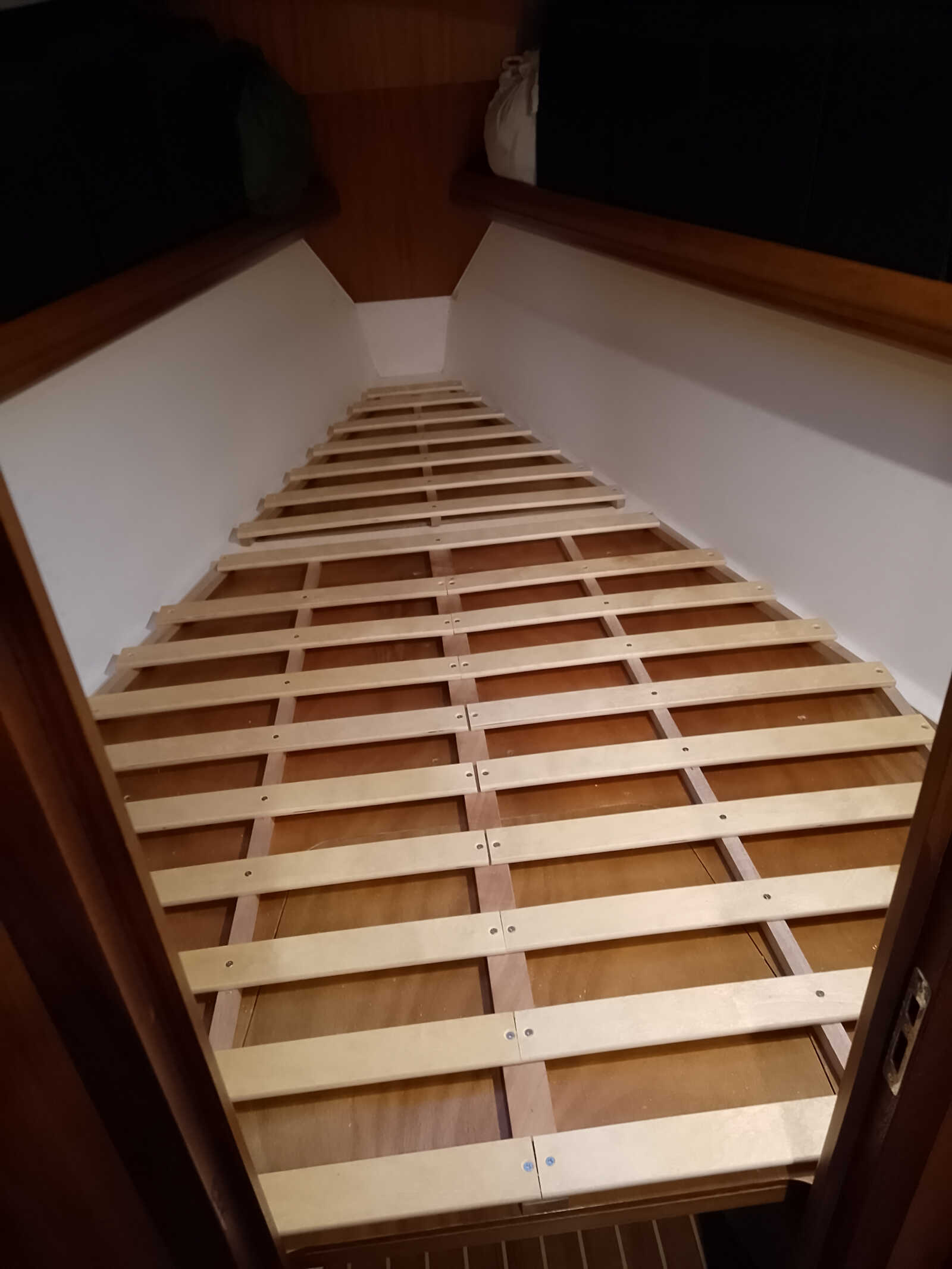
Il nostro nuovo letto dopo una giornata di lavoro per adattare le doghe alla forma triangolare e alla struttura che ci permette di usare meglio gli scompartimenti sotto il letto.
Un altro aspetto che abbiamo migliorato è stato quello di aggiornare i nostri strumenti di navigazione: abbiamo optato per un software opensource chiamato opencpn, installato su un minicomputer a basso consumo (Raspberry PI) e reso il futuro update degli strumenti più semplice grazie all'integrazione di un backbone NMEA 2000 (il più moderno protocollo di trasmissione dei dati tra i vari sensori tipo anemometro, log, profondimetro, ecc.) e un multiplexer che consente di raccogliere i dati nei diversi formati e trasmetterli al computer col cartografico. Inoltre abbiamo installato un trasponder AIS un sistema che sfruttando le onde radio permette di ricevere dalle altre imbarcazioni dati come posizione, velocità, direzione, nome e caratteristiche dell'imbarcazione. Questo incrementa la sicurezza in quanto riduce i rischi di collisione anche in situazioni di scarsa visibilità.
Altro grande progetto è stato l'installazione di un nuovo banco batterie al litio per i servizi, per estendere la nostra autonomia energetica. Ciò ha comportato una lunga ricerca per riprogettare buona parte dell'impianto elettrico, per dimensionare correttamente i cavi e installare i fusibili necessari a creare un impianto sicuro dato l'ingente quantità di energia immagazzinata nelle 3 batterie al litio da 100 Ah. Oltre alla parte elettrica abbiamo dovuto creare un vano batterie più grande per fare posto al nuovo impianto. Il tutto è predisposto per l'integrazione dei pannelli solari che monteremo prossimamente.
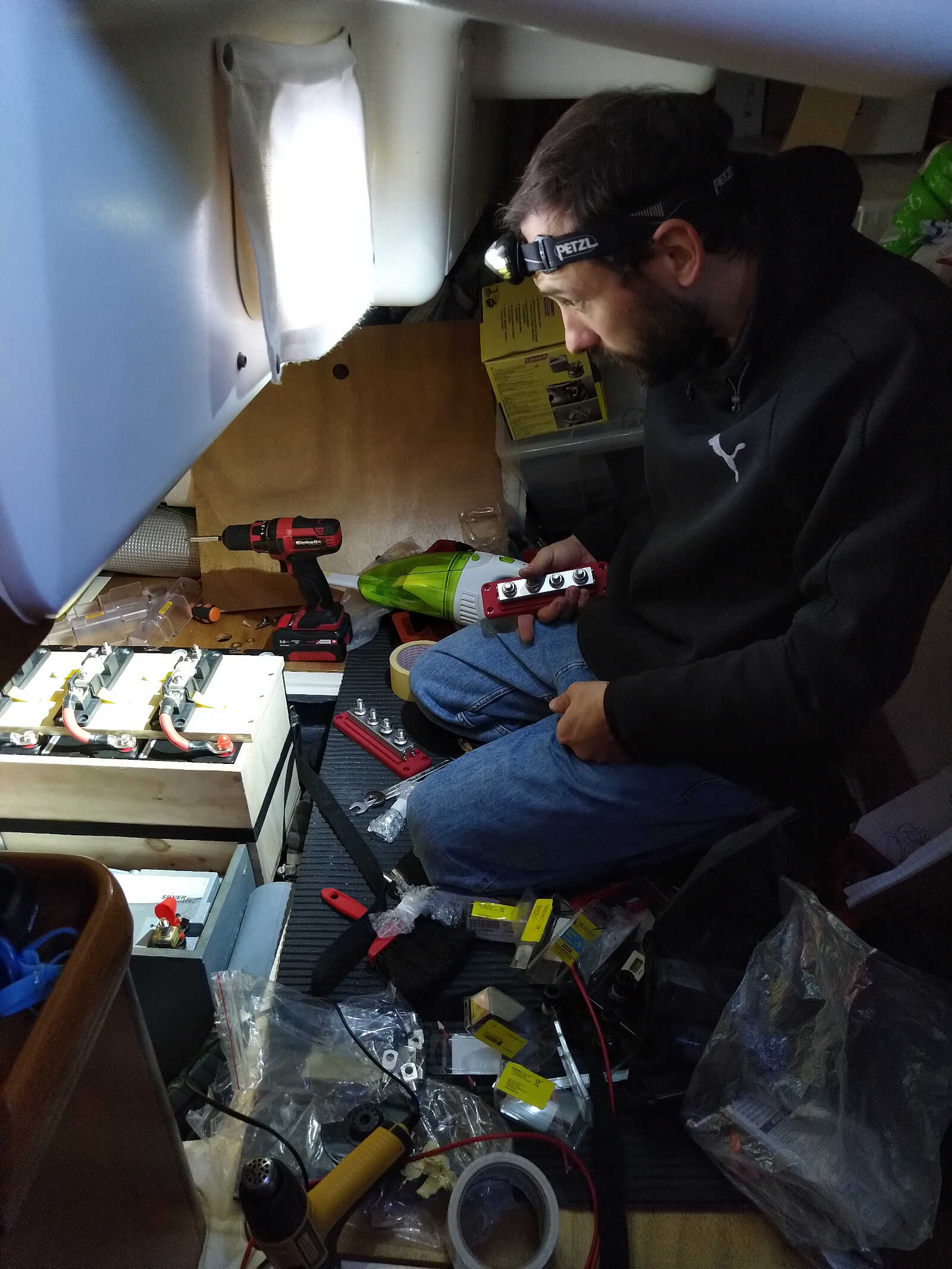
Per installare le batterie, oltre a saper passare ore a studiare, servono anche manualità e flessibilità.
Inoltre serve anche trovare i professionisti giusti per i lavori che non si possono fare da soli come fare la nuova cappottina paraspruzzi, aggiungere la terza mano di terzaroli alla randa e soprattutto disalberare e fare il nuovo sartiame. Questo è sicuramente il lavoro più importante e anche costoso ma che avevamo già programmato fin dall'acquisto di Lilith : oltre all'aspetto della sicurezza (i cavi d'acciaio che sostengono l'albero avevano 20 anni e raggiunto la fine della loro vita) c'è anche la perizia necessaria a immatricolare la nostra barca a vela da superare.
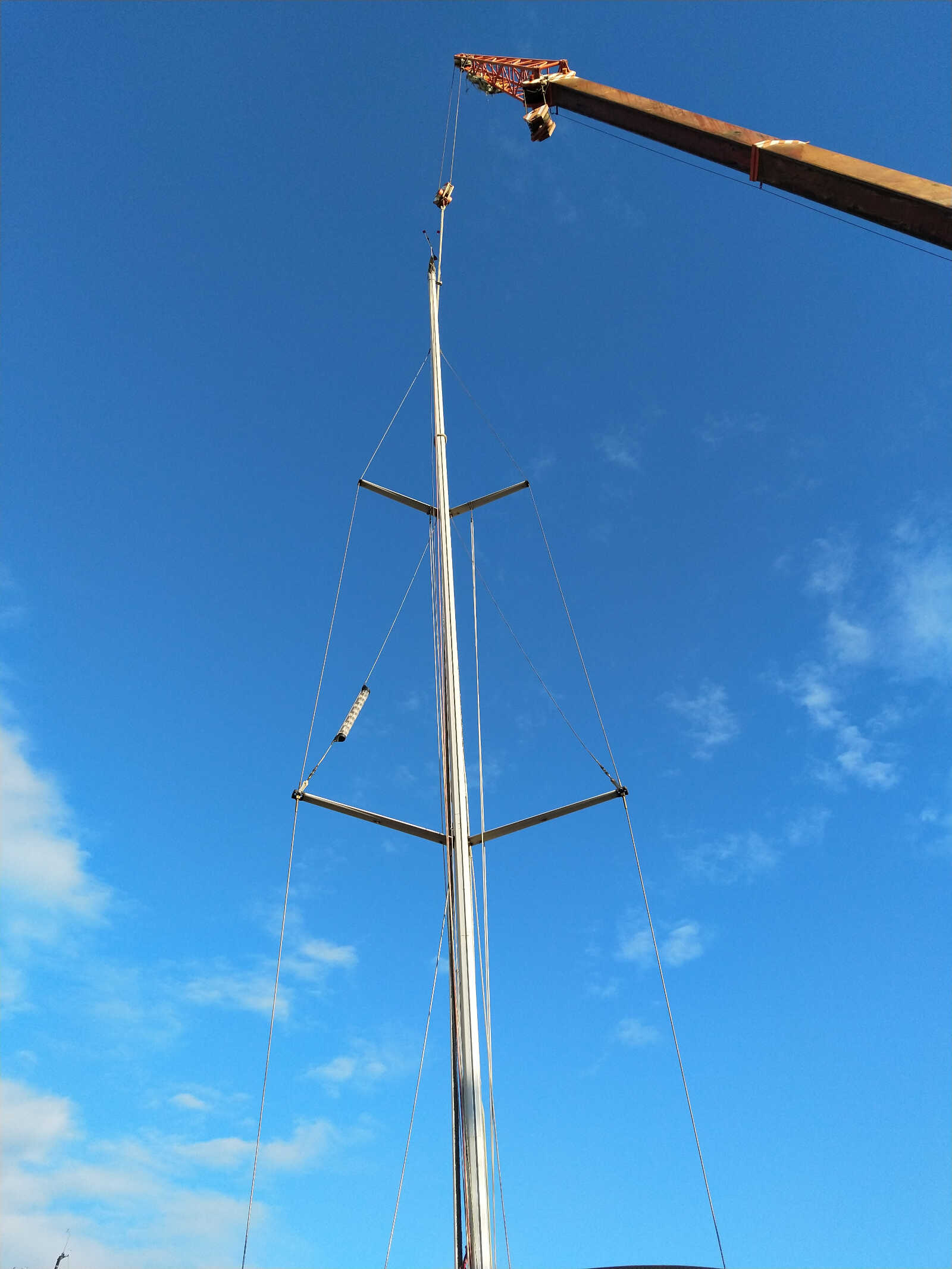
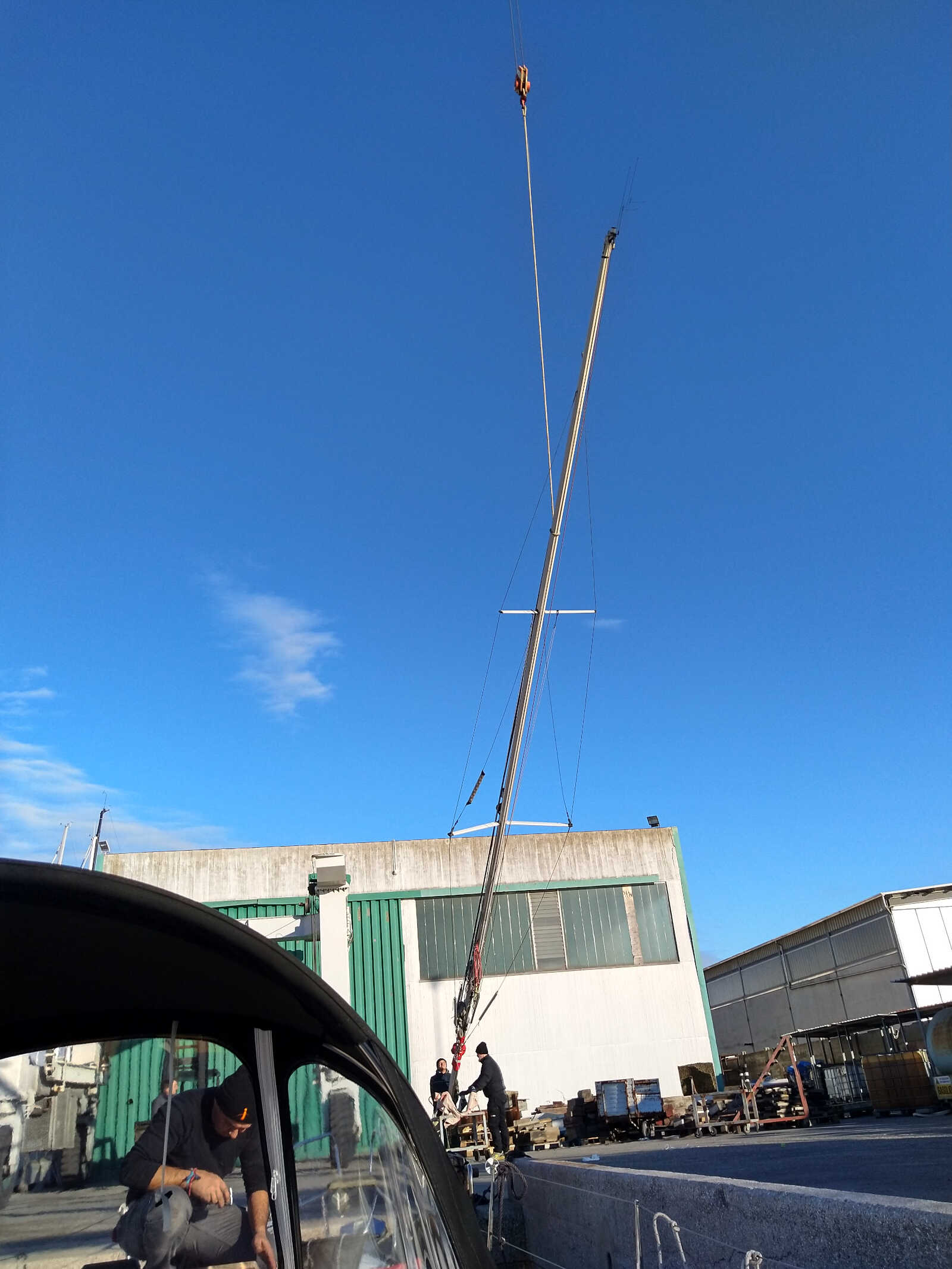
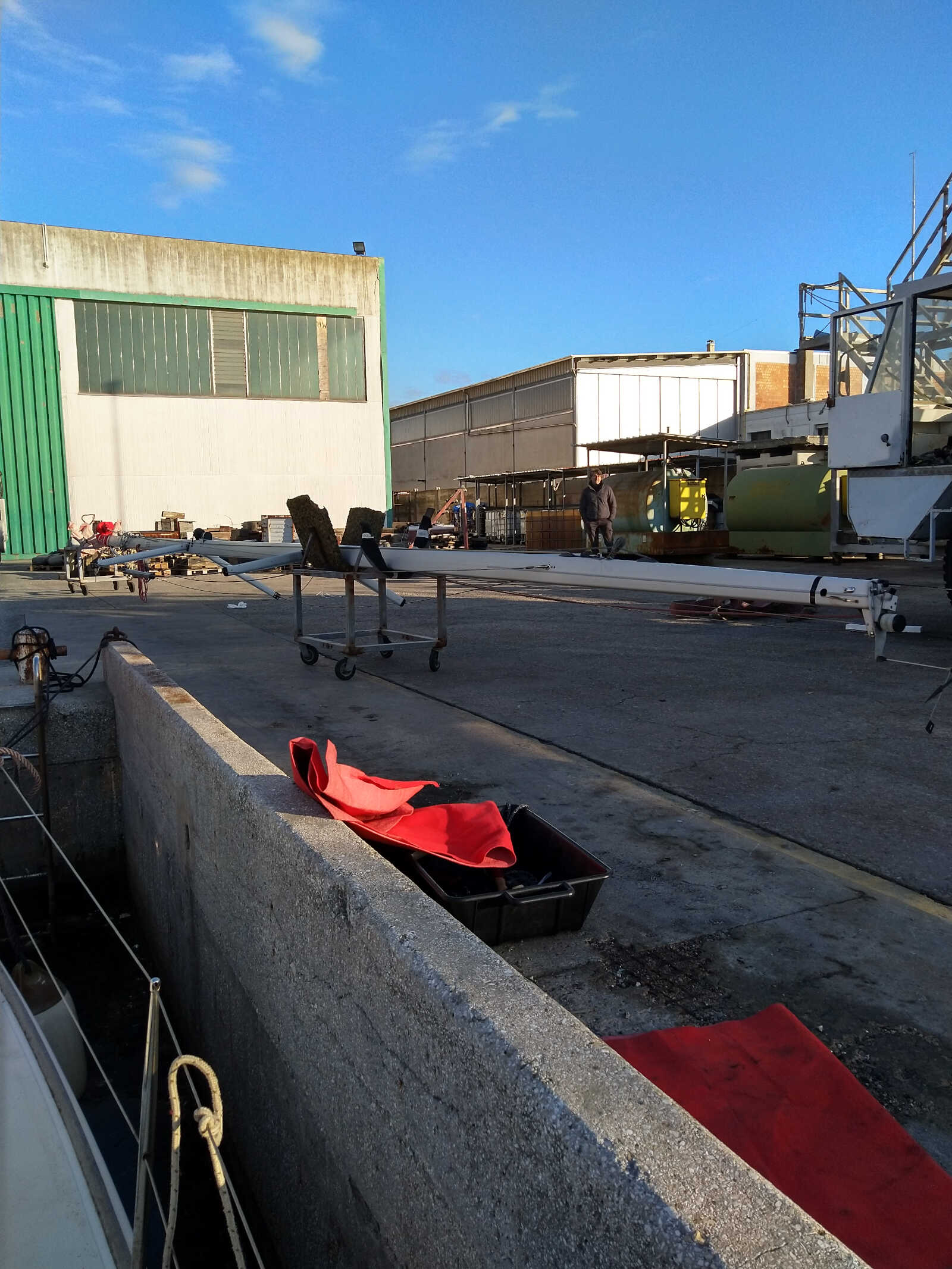
In cantiere durante il disalbero.
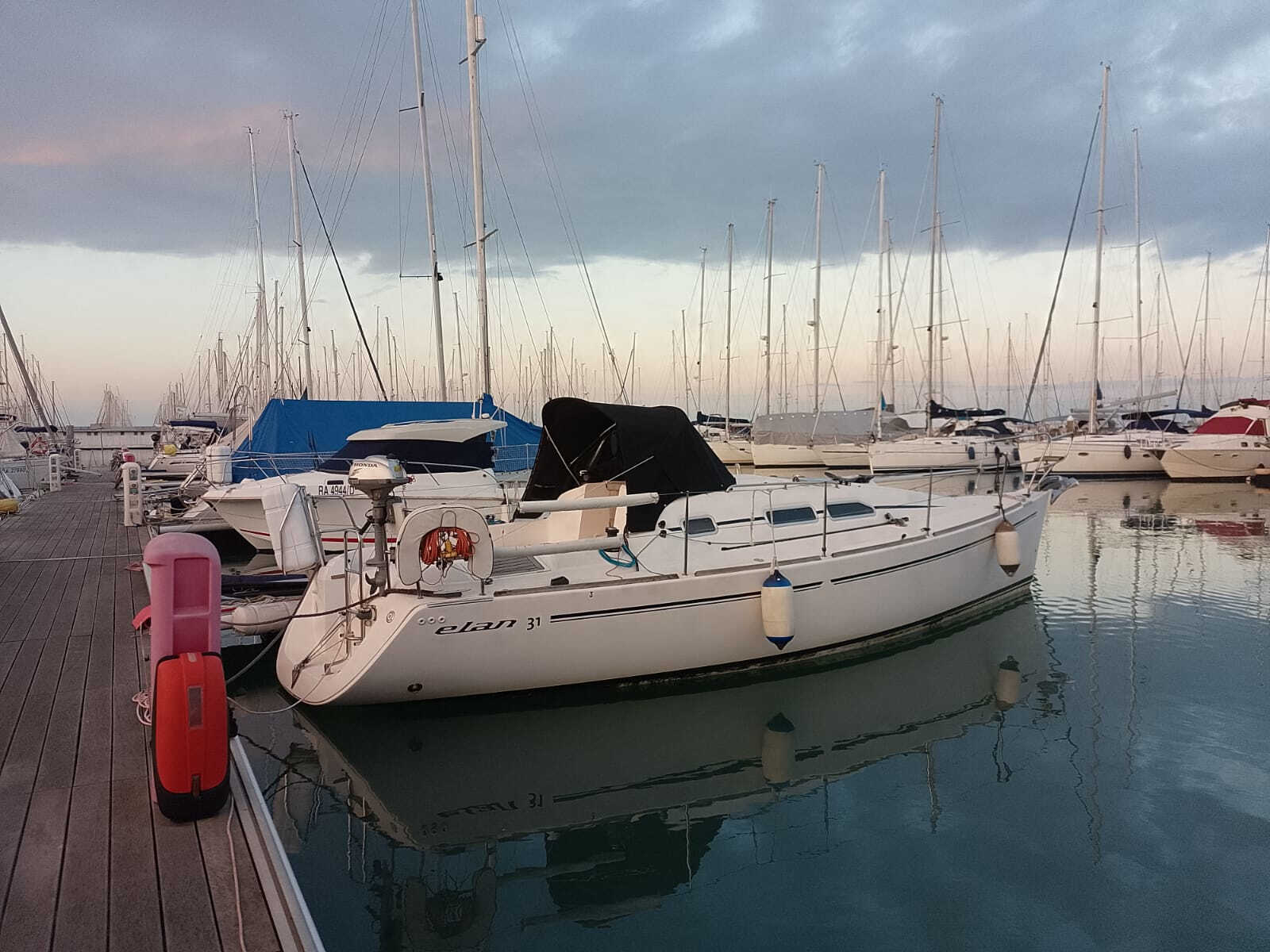
Lilith di nuovo al suo posto in porto senza albero e con la nuova cappottina paraspruzzi.
Tra un progetto e l'altro siamo comunque riusciti a fare un paio di veleggiate autunnali visto che poi il tempo a ottobre e novembre è stato invece mite e con tante giornate di sole e poco vento, che ci sono tornate utili anche per le “gite” a Ravenna, che dista circa un'ora in bici, per prendere materiale necessario ai nostri progetti che non riusciamo ad acquistare online.
Le giornate piovose le passiamo a fare ricerche e progetti al computer e fortunatamente a coltivare hobby vecchi e nuovi.
From September to December
10 Dec, 2024
A few days after we returned from the Venetian Lagoon, we started to prepare for a cruise to Croatia in September, but the weather forecast made us postpone our departure to the point where we realized that our cruise to Croatia was not meant to happen because of the refit jobs planned for October.
There was certainly a weather window for the crossing (which is a minimum of 15 hours) but we did not want to spend most of the first days seeking refuge from the bad weather, not knowing how it would turn out later. It was indeed very unstable and rainy with high winds throughout September, as some sailors who went anyway and the weather news confirmed afterwards.
So we were happy with our choice to stay in our safe harbor in Marina di Ravenna, and begin to work on the small and big projects we had planned for this fall and winter anyway, in order to prepare the boat for the first cruising season.
We did purchase Aurora in excellent condition, ready to sail from day one and ready for her first cruise after a few weeks, but now the time has come to adapt her to life aboard in the winter as well and to prepare her for weeks at anchor without needing to go to port starting next spring, when we will leave our berth in Marina di Ravenna for good.
After several months on board, our living needs are clearer, so we decided to remove the cabin doors and shorten the table to move around more easily. We also installed slats under the mattress to prevent condensation problems in the cold months.

Matteo reassembling the table after sawing off the end edge and adjusting it to its new position.

Our new bed after a day of work fitting the slats in the triangular shape to the structure that allows us to better use the compartments under the bed.
We also upgraded our navigation system: we opted for an opensource software called opencpn, installed on a low-power minicomputer (Raspberry PI) and made the future updates easier by integrating a NMEA 2000 backbone (the most modern protocol for transmitting data between the various sensors like anemometer, log, depth sounder, etc.) and a multiplexer that allows to collect data in different formats and transmit them to the computer with the chartplotter. In addition, we have installed an AIS transponder a system that transmits and receives via radio data such as position, speed, direction, name and characteristics of the vessels. This increases safety as it reduces the risk of collision even in low visibility situations.
Another major project was the installation of a new lithium battery bank to increase our power and be able to be off-grid for longer period. This involved extensive research to redesign much of the electrical system, to properly size the cables and install the necessary fuses to create a safe system given the large amount of energy stored in the 3x 100 Ah lithium batteries. In addition to the electrical part, we had to create a larger battery compartment to make room for the new system. The whole thing is prepared for the integration of solar panels that we will mount soon.

In addition to be able to sit hours researching the topic, manual skills and flexibility are also very much needed to install the batteries.
Finding the right professionals for the jobs we cannot do is also an important part. We contacted local craftmen to make the new spray hood, add the third reefing to the mainsail, and most importantly, to de-mast and make the new rigging. This is definitely the most important and also expensive work but one that we had already planned since the purchase of Lilith: besides the safety aspect (the steel cables supporting the mast were 20 years old and reached the end of their life) it is mandatory in order to pass the inspection to register our sailboat.



In the boat yard for the de-masting operations.

Lilith back in her berth without the mast, but with the new sprayhood
In between projects we still managed to do a couple of sailings since then the weather in October and November was mild with lots of sunny days and little wind, which also came in handy for our “trips” to Ravenna, which is about an hour away by bike, to pick up materials needed for our projects that we cannot buy online.
We spend the rainy days doing research and projects on the computer and fortunately cultivating hobbies old and new.